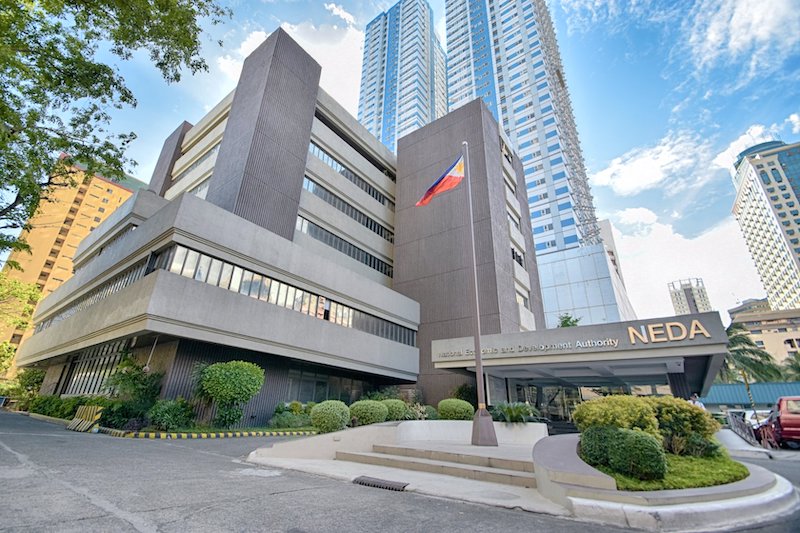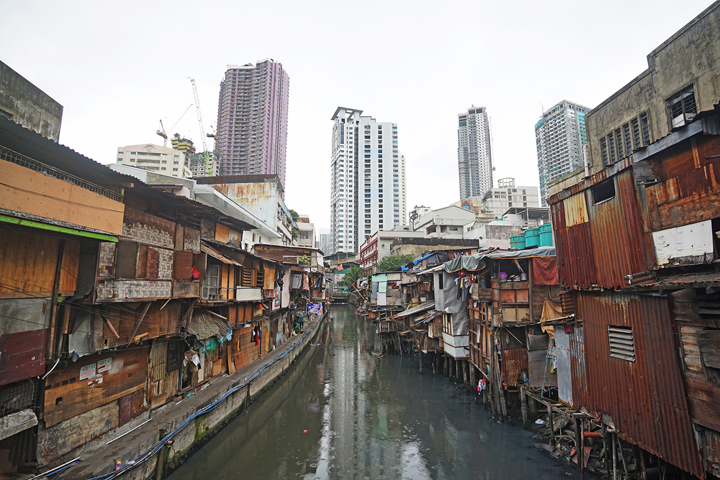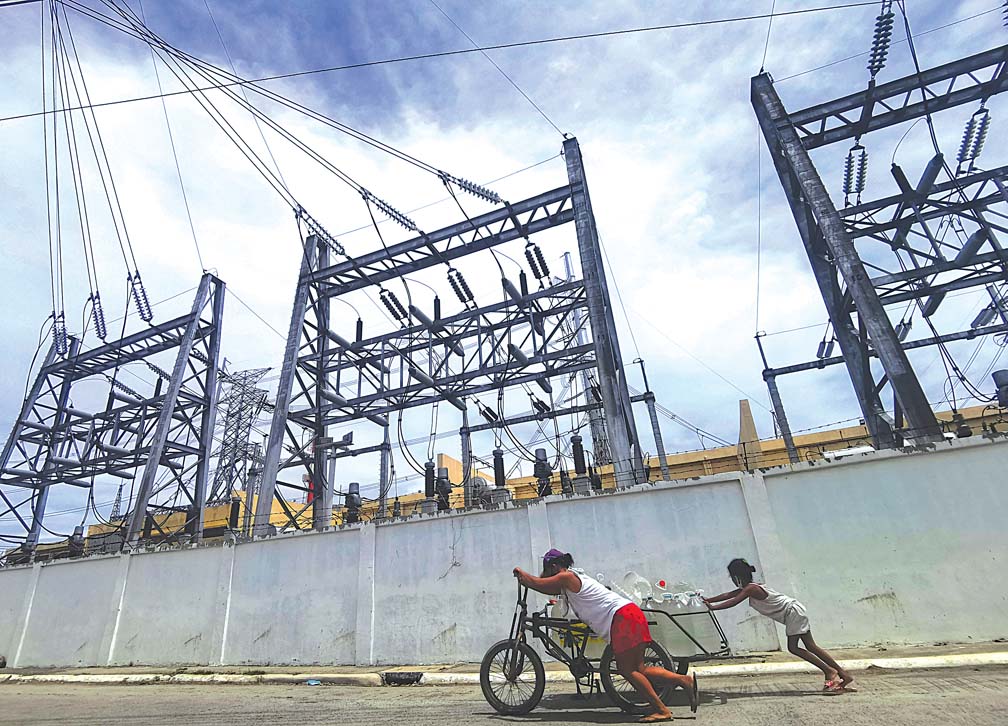By Cai U. Ordinario & Catherine N. Pillas
WITH the complexity of Fili-pinos’ transportation woes, the incoming transportation secretary said he will move for a 30-year legislated road map to end traffic jams and improve mobility nationwide.
In a discussion with the BusinessMirror on Wednesday, former Clark Development Corp. President Arthur P. Tugade said the road map will span five administrations.

Tugade said this is different from other transport road maps, because he is proposing that it be legislated by Congress.
This will ensure that the plan will be carried out by succeeding administrations, said President-elect Rodrigo R. Duterte’s appointee at the Department of Transportation and Communications (DOTC).
“Kung sakaling magtatagal ako sa DOTC hanggang four years—on my fourth year [or] on my sixth year—I hope that during that time, I will be able to formulate a 30-year road map that will address the full development, not only of Metro Manila or Mega Manila, but also all provinces in the country,” Tugade said.
He explained that the road map will contain all modes of transportation, such as railways and water transport.
Tugade said the road map will be accompanied by a “sinking fund,” where a portion of government revenues can be pooled to create the fund.
Tugade said these revenues can come from one-time transactions, such as the sale of government land and other similar big-ticket public financial undertakings. “Hopefully, we can formulate a 30-year road map to achieve this dream, this hope of having a beautiful country. What does that mean? Why 30 years? The term of a president is six years, so after five presidents, we hope there will be substantive development.”

Priorities
WHILE the details of the road map will have to wait, Tugade said there are more pressing concerns the Duterte administration needs to prioritize, such as traffic in urban areas like Metro Manila.
One of the marching orders is to decongest Metro Manila’s worsening traffic situation, according to Tugade. He added he is expected to come up with a plan to resolve the Metro Railway Transit (MRT) problem. Likewise, he said he will pursue the retirement of 15-year-old public-utility jeepneys.
To test the ills plaguing the MRT, Tugade said he put on a hat, wore sunglasses and, in short pants, rode the Light Railway Train (LRT) in a station he can’t remember.
“Hindi ako nagmamaneho, kaya mahina ako sa direksiyon,” the incoming transport chief said. “Hindi ako marunong mag-drive, so pumunta ako one weekend dyan, sumakay ako. Nung natapos ho, anong sabi ko? ‘Diyos ko’ [I don’t drive so I’m not good at finding directions. But one weekend I went to and rode the LRT. After I exited, I was only able to say: ‘My God’].”
Tugade asked for understanding for not repeating this foray into the urban center’s railway network.
He said he also went to one of the country’s airports and entered the comfort room.
“Ang sabi ko nung pumasok ako: Diyos ko [When I entered the comfort room I said: My God].”
Airport
TUGADE said the incoming President’s concerns also include congestion in the country’s airports.
Airport authorities have admitted the Ninoy Aquino International Airport (Naia) has reached its limit in terms of capacity.
To address some of the congestion, Tugade said he intends to move the general aviation section of the Naia to Sangley airport in Cavite. He estimates this will free up some 18 percent to 20 percent of the capacity of the Naia.
Tugade said he has already met with concerned parties and they are open to relocating, as long as the government can assure them that they will be given a good location. He estimates the transfer will take around eight months to a year to implement.
“I know there is flooding in Sangley, I know it needs connectivity. Of course, we also want to decongest Naia,” Tugade said. “Shouldn’t this require us to give them good relocation? I will do that [for them].”
Private sector
ON a personal capacity, Tugade said he is open to allow the private sector to build airports. He said the only condition is for the private sector to undertake the project on their own without asking the government for guarantees or funds to build the airport.
Reports have confirmed that conglomerate San Miguel Corp. (SMC) plans to pitch its proposal to create a P10-billion airport in a reclaimed location on Manila Bay to the incoming Duterte administration.
The proposal was initially pitched to the Aquino administration two years ago. However, SMC’s proposal was shot down by the Cabinet.
“Whether there is a Ramon Ang proposal to construct an airport or a Cabangon-Chua proposal, [I say] go ahead, be my guest. That’s my personal opinion,” Tugade said. “We all know these policies need to be approved by Neda [National Economic and Development Auhority], the President and the Cabinet.”
He said the incoming administration will honor the public-private partnership (PPP) contracts that the Aquino and previous administrations have entered into and executed. He said these will be treated with a “presumption of regularity and continuity.”
However, Tugade said the PPP guidelines and policies will be reviewed. He also said the exact details of the review are still being finalized.
Earlier, incoming Neda Director General Ernesto Pernia said the Duterte administration is not keen on abolishing the PPP Center, despite efforts to legislate the PPP Act failed under the outgoing Congress.
Extended hours
APART from new airports, Tugade said the Department of Transportation and Communications (DOTC) will also study projects that aim to extend airport hours from its current 10 p.m. closing time. However, this can only be done if the airport has a working radar and quality night-landing equipment.
The government already has a project that aims to address this, the New Communications, Navigation, and Surveillance/Air Traffic Management (CNS/ATM) Systems Development project.
However, the CNS/ATM has been identified by the Neda in its 2014 Official Development Assistance (ODA) Portfolio Review as a “problematic” ODA project.
Nonetheless, there has been some improvement. The Neda said the project posted a decrease in backlog of $205.62 million to $30.71 million in calendar year 2013, from $236.33 million in CY 2012.
“We are already looking at the radar and night-landing equipment,” Tugade said. “If your airport has night-flying capabilities, you will have more use [of the airport] after 11 o’clock to 3 o’clock in the morning.”
Railways
TUGADE believes railways will help alleviate the traffic situation in Metro Manila.
He reiterated the earlier pronouncement of Duterte to focus on three primary railways: the Bicol Express line, Mindanao Rail System and the Manila-Clark railway.
The operation of the famed Bicol Express is currently suspended, while the feasibility of the Mindanao Railway Project was started by the Neda in 2014.
Neda documents revealed that about P400 million will go to crafting feasibility studies for the Strategic Railway Development Plan and the Cagayan de Oro-Iligan Corridor from Linamon to Jasaan. The amount is also expected to be spent for a prefeasibility study for the Tagum-Davao-Digos Corridor and the technical assessment for Iligan-Pagadian City-Zamboanga.
The Manila-Clark railway, meanwhile, will include a 22-kilometer stretch that connects Clark and Subic in Pampanga. This will allow the government to create a Central Luzon hub that allows both ports to benefit from each other’s strengths.
“We are going to combine the two critical components of a hub, the train and the airport. If we can create a Central Luzon hub with an airport, a pier, an SCTEx [Subic-Clark-Tarlac Expressway] and the businessmen are there and are given incentives, wouldn’t that be considered development?” Tugade told the BusinessMirror.
MRT
On the issue of the MRT Line 3, LRT 1 and the future MRT 7 interim station, Tugade said he has spoken to proponents and hopes to have a concrete plan on how to move forward as soon as he steps in office.
“I hope I can get the parties to agree in the first 100 days. We can tackle the issues in terms of policies and agreements, in the first 100 days,” Tugade said, revealing he has spoken to both Metro Pacific Investments Corp. and Ayala Corp. (the joint venture of Light Rail Manila Corp.), and other parties involved in the dispute for the common station.
On the dispute on maintenance and operation contract woes of MRT 3, between the government and the private proponent, namely, MRT Holdings Corp. of Robert J. Sobrepeña, Tugade said they have initiated a dialogue with the businessman’s camp, as well.
The transport head stressed that immediate response, however, should be the granting of emergency powers on which the resolution of other attendant transport problems is hinged.
Seaports
ACCORDING to Tugade, the next administration would also like to add more seaports. Tugade said this is the reality of an archipelago like the Philippines.
He said, however, more immediate change will come to airports and seaports nationwide in the first 100 days or four months of the Duterte administration. He said all airports and seaports will have free wireless-fidelity connection before the end of the year.
Retiring jeeps
TUGADE said he plans to pursue the move of the Land Transportation and Franchising Regulatory Board to get 15-year-old public utility jeepneys (PUVs) off the road and to comply with environment regulations.
“In the first 100 days, we will issue and implement certain rules regarding the phaseout,” Tugade remarked, referring to PUV groups and operators. “I will not be remiss in my responsibilities and talk to stakeholders.”
Private subdivisions can also be opened to traffic, he reiterated.
To ease doing business with the Land Transportation Office, Tugade said he plans to stop the importation of license plates and third-party bidding of licenses to avoid delays.
“If the existing rules and policies will allow me to do so, I don’t want to import car plates, and see the possibility of them being made in the country,” he said. “I don’t want to bid out the making of licenses either. We can ask the assistance of the National Printing Office or some such agency.”
Tugade added he also plans to extend the validity of the licenses from three years to five years, and make the renewal process easier.”
This includes improving the Pasig River Ferry Service, which may see more stations, pending evaluation on the density of passengers, and security of access. However, Tugade said he sees this mode of transportation on the DOTC’s agenda on its fourth or fifth year.
New team
TUGADE said he is still finalizing the list of undersecretaries in his department. He said he only lacks two more to complete his roster and he already had new heads for the Naia and the Maritime Industry Authority.
He said some of the candidates he wanted to tap refused the position for various reasons apart from salaries. Tugade added that while some of his choices may be criticized for having “conflict of interest,” he is not that concerned.
His priority, Tugade said, is expertise and integrity. He added that if a candidate is found to be knowledgeable about his or her position and can be trusted by the public, that person will be appointed.
Tugade said this has always been his position, even when he was still at the Clark Development Corp. He said he is only being true to himself, which is something he wants the public to do when dealing with him.
“We are here together to dialogue and understand each other that you are not here to kill me and that I see you not as an enemy but rather as a partner in development and growth,” Tugade said.
The presumptive transportation head said he now understands his predecessor Secretary Joseph Emilio A. Abaya.
“In fairness to Secretary Abaya, I know the emotional hurt he has been exposed to in the last several months or years. Inaasikaso nila kami sa transition. They were so transparent and natututo kami sa kanila.”
Tugade regards Abaya as “a gentleman and an officer.”
“If you are emotionally active then mag-turnover ka, di ba mahirap ’yun? They accommodate my schedule, they answer everything we ask. On that regard, saludo ako sa kanila.”
Emergency powers
TUGADE explained the issue of congestion has wreaked havoc on the bottom lines of carriers and made the country an unattractive destination for foreign direct investments.
But before these can be addressed, Tugade said Congress must grant the President emergency powers. He said the emergency powers will enable him as transport secretary to effect speedy and meaningful action.
He explained that one of the effective uses of emergency powers is to address right-of-way (ROW) concerns. This will be important in decongesting the airport since the incoming administration is open to constructing another runway for the Naia.
Building a new runway on top of adding another terminal in Sangley for general aviation will further improve the capacity of the country’s primary gateway, according to Tugade.
The Aquino administration earlier junked this proposal of a third runway, saying building a new terminal will instead be more economical and will be faster to construct.
The plan to build a new runway will require ROW acquisition on the part of the government, which usually takes a lot of time and resources.
In exercising emergency powers, however, Tugade clarified the issue of favoring direct procurement, saying the procurement method would depend on a case-to-case basis.
“The extent of the emergency powers would depend on Congress. They will have an oversight committee as well,” Tugade said. “But I never said that direct procurement will be the only method. It depends on the situation.”
According to Tugade, he believes the emergency power would address “legal issues or restraining orders or injunctions.”
“Ang mga pag-aangkat ng bidded projects, matutulungan natin ’yan mapadali, without sacrificing quality and efficiency of service, ’pag meron tayong emergency powers to address traffic and transportation problems.”
Tugade explained the initial plan for the emergency powers is two years. However, he said it can be removed if the “traffic crisis” is arrested earlier. But if the traffic situation remains unresolved, even before the maximum of two years is over, the Duterte government can go back to Congress to extend the President-elect’s emergency powers.
“Like I said, our lives and families have been ruined by traffic. We are now the laughingstock of our neighbors,” Tugade said. “They do not want to invest here. If that is not a crisis, I do not know what is.”
Image credits: Nonie Reyes, Ed Davad
























2 comments
Start building. A completed high impact project already awarded should be in theworks .
The guiding principles for this road map is simply solving traffic and pollution. Previous studies from very competent people were put forward before the exit of the Arroyo Administration. These were all put in back burner of Aquino’s government. One study even asserted that the government could even avail of the Clean Technology Fund if plans for non-polluting transport projects, e.g. CNG buses were adopted. My own take is to adopt an inter modal passenger transport system. We could even use the innovations and inventions of DOST like their AGT, hybrid road train and hybrid train system.